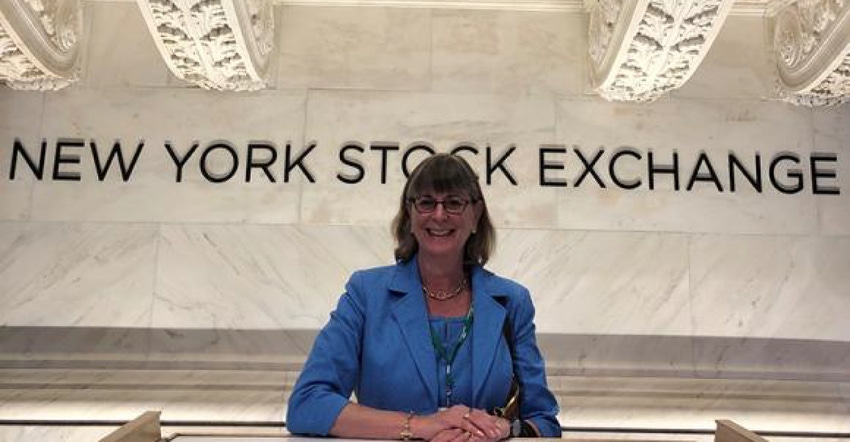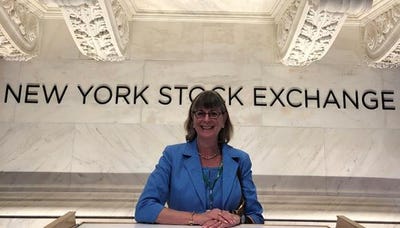Second Quarter Earnings Roundup: Price Growth Remains Strong
Over the past two weeks, the publicly-traded solid waste companies reported second-quarter earnings and held follow-up conference calls. In this edition of Business Report, we cover the highlights and discuss the similarities and differences.

Over the past two weeks, the publicly-traded solid waste companies reported second-quarter earnings and held follow-up conference calls. In this edition of Business Report, we cover the highlights and discuss the similarities and differences.
Organic Revenue Growth More Muted
Price growth was still quite strong among all the companies—yield at Republic Services (RSG) and WM (WM) exceeded or met expectations, while core pricing at Casella Waste (CWST) also surprised to the upside. Total price growth at GFL Environmental (GFL) and Waste Connections (WCN) was a bit below first quarter levels, in part due to lower fuel surcharges, but remained very strong at industry leading levels. However, based on current guidance, pricing has peaked on a percentage growth basis and is expected to trend down sequentially, as open market pricing begins to reflect declining cost inflation and difficult comparisons, while index, or CPI-linked, pricing is expected to crest in the second half of 2023. All that said, pricing retention remains at very high levels across the board, and all the management teams expect pricing to remain at a structurally higher level. A major driver behind that is the consistent industry focus on increasing landfill and residential pricing—in the former case, to recoup higher operating costs, and in both cases, to increase the returns on these capital-intensive lines of business. RSG and WM modestly bumped up their 2023 yield expectations to 6% and over 5.5%, respectively, while GFL and CWST took up their 2023 core price targets, and WCN maintained its target.
On the other hand, volume was a consistent, negative surprise. WM and RSG both eked out volume gains of 0.2% and 0.4%, respectively, which were down from first quarter levels. CWST, GFL and WCN were decidedly negative at (2.6%), (3.5%), and (1.9%), respectively. For all the companies, a frequent theme and explanation was the deliberate culling or shedding of unprofitable or low return business, particularly in the residential line. However, first WM, then CWST and WCN noted weakness in special waste, and to some extent a slowdown in industrial or temporary roll off volumes. RSG had strong special waste growth, which it attributed to cross selling success in the wake of the US Ecology acquisition, though it too noted some slowdown in large container industrial volumes. A number of management teams characterized the disappointing special waste volumes as temporary—a delay into the second half or 2024—citing still strong pipelines, and a number of the companies also noted the increased economic uncertainty in the Spring with concern over a potential banking crisis, which appears to have eased over the summer months. The management teams’ fairly sanguine view overall about what the volume slowdown may portend for the broader economy was underpinned by other important metrics—service intervals in the commercial business remain positive, as does net new business, supporting the outlook for stable economic conditions. Full year volume guidance remained the same for WM and was set at the lower end of original expectations for RSG and CWST, which would imply roughly flat volumes in the second half, while GFL and WCN volumes are expected to remain negative. The combination of more muted organic growth, the lower benefit from fuel surcharges and the known headwind from recycled commodities pricing generally produced second quarter internal revenue growth that was modestly below expectations.
Management Teams Throw in the Towel on a Recycled Commodity Price Recovery
As expected, recycled commodity and renewable fuel standard credits (RINs) pricing remained a major headwind in the second quarter. On the positive side, in the wake of the late June EPA set rule, which set renewable energy volume obligation (RVO) requirements, RINs pricing popped from levels in the low $2 range to trading around $3, providing some relief to the renewable natural gas (RNG) line of business. On the other hand, although old corrugated cardboard (OCC) pricing has continued to grind higher through the first half and into July, the pricing of various grades of recycled plastic declined dramatically from May to July. As a result, the management teams who had forecast (or assumed in guidance) a rebound in in recycled commodity prices pulled in their horns. Very consistently, the current outlook for the remainder of the year for recycled commodity pricing is basically flat to current levels, with the gradual improvement that is still seen for OCC offset by recycled plastics pricing.
Margin Expansion a Bright Spot, Leading to Modestly Increased Guidance For Most Companies
Despite the RINs and recycled commodity price pressures in the quarter, margin expansion was positive across the board and generally better than expectations, supported primarily by price growth that was in excess of internal cost inflation. Internal cost inflation continued to track down sequentially, largely due to less pressure from the key labor and wage expenses. Turnover and job openings were generally improved. Repair and maintenance expenses, however, generally remain stubbornly high on still-delayed truck and parts supply chain issues. Lower fuel surcharges (reflecting lower diesel costs), which are basically a pass through, provided a substantial boost for all the companies’ margin results as well. That said, excluding commodity price tailwinds and headwinds, underlying solid waste margins continued to improve, at anywhere from 20 basis points for RSG to more than 300 basis points for GFL.
As a result, full year EBITDA guidance was modestly raised (generally on the order of 1%-2%), with the exception of WM, which also modestly (by 1%) lowered its EBITDA guidance. CWST was the exception, with EBITDA guidance raised almost 9%, largely due to the benefit from its recent acquisition of divested GFL assets. Notably, WM had the most recycled commodity price recovery built into its guidance, as well as the most exposure to depressed first half RINs pricing, which, not surprisingly, was the primary reason for the lower guidance.
Setting the Stage for 2024
The pop in RINs pricing, which is expected to be largely sustained, along with recycled commodity prices, which at the least will anniversary lower values, if not recover further, are expected to turn into earnings tailwinds in 2024. Internal cost inflation is expected to continue to trend down, and while price percentage growth is expected to be down from recent levels, it is not expected to return to more typical historical levels in 2024. CPI, or indexed-linked, pricing is also expected to remain elevated given the typical 12-18 month look back in setting that pricing. Thus, the management teams all remained bullish on the 2024 outlook, though formal guidance is not expected until February. So, expectations for outsized margin expansion in 2024 remain intact, particularly given the high second half 2023 margin “jumping off points”, implicitly based on revised guidance or explicitly stated by management.
Steadfast Commitments to RNG and Recycling
Despite lower energy and RINs pricing and depressed recycled commodity pricing in the first half, investment plans and related capital expenditures for RNG and recycling projects were reiterated, or increased by $200-$300 million in the case of GFL. WM lowered its expected 2023 sustainability capex based on project delays. All long-term profit targets (generally by 2026) were reiterated. Concurrent with its earnings results, RSG announced a major new recycled plastics joint venture with Ravago, complementary to its plastics polymer centers investment.
M&A Remains Very Active
Despite an easing in certain cost categories, private haulers remain under significant pressure, and as a result, acquisition pipelines for the publicly-traded solid waste companies remain robust. RSG has increased its acquisition investment target from $500 million to $1+ billion. CWST had a very active quarter, and with the close of its purchase of the mid-Atlantic GFL assets, management has noted that opened up a whole new targeted acquisition market area, almost doubling its previous pool of potential acquisition candidates. WCN announced the strategic acquisition of Arrowhead Environmental, which will also expand its acquisition opportunities. Even GFL, which has been in a professed “acquisition digestion period” completed 16 tuck-in acquisitions in the first half!
About the Author(s)
You May Also Like




